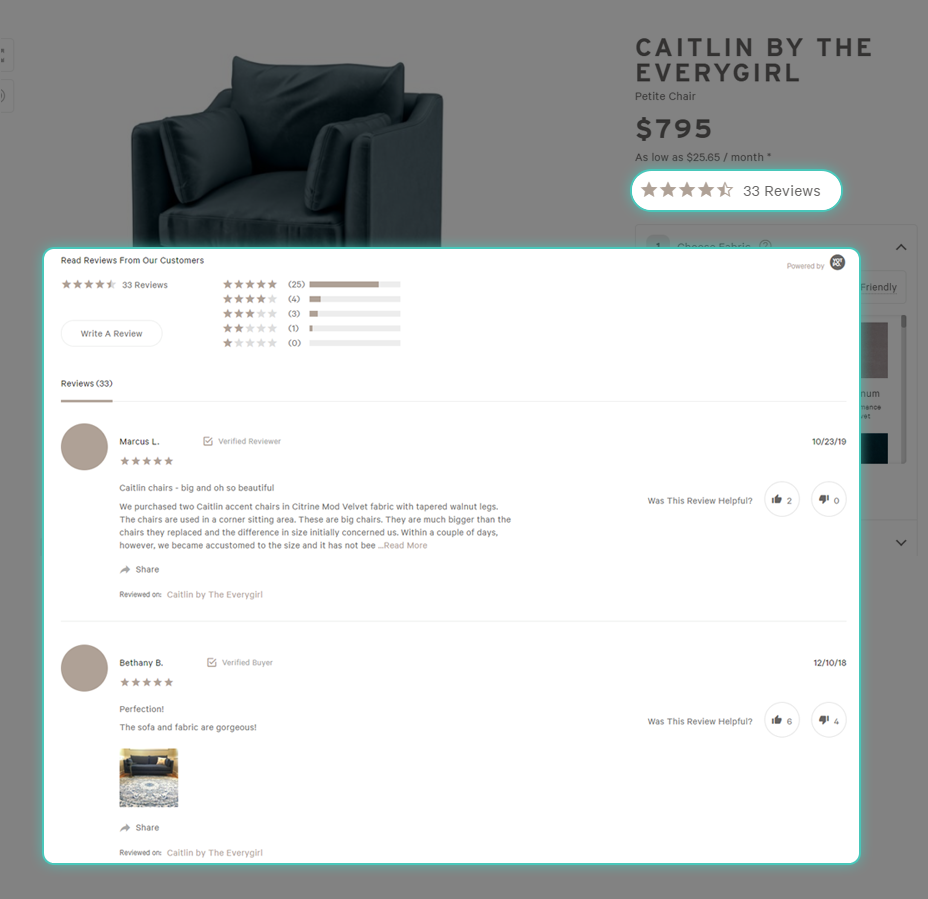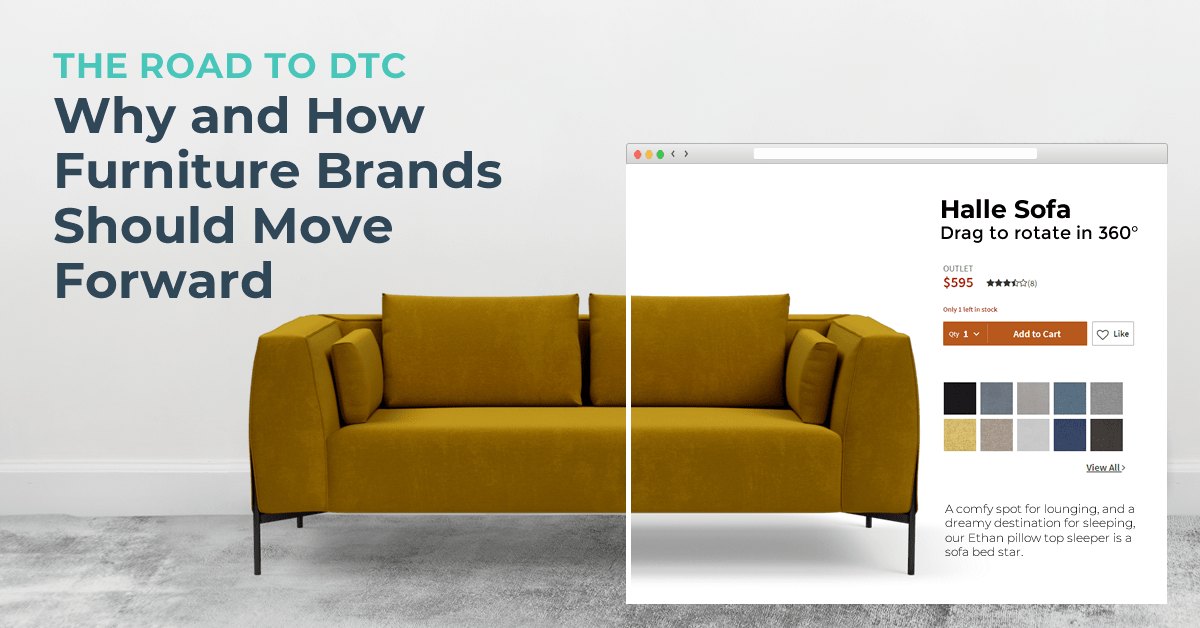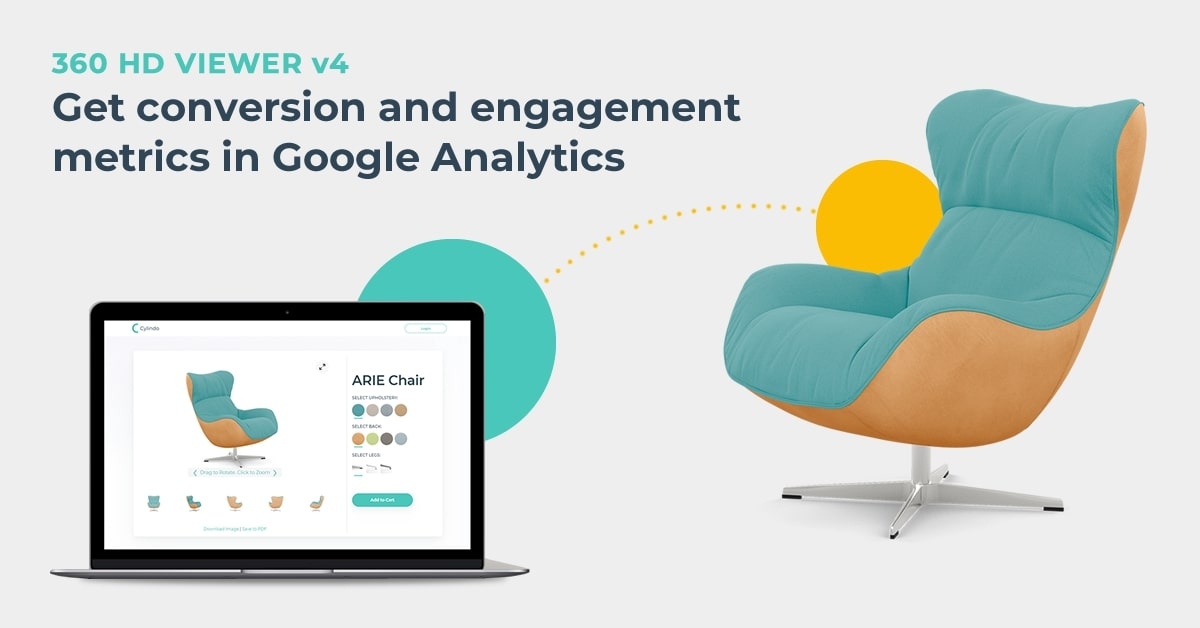Furniture businesses are finally getting a grip on the current situation. After four months of fear and uncertainty, it’s time to get back on track and prepare for the new normal.
The outbreak was a catalyst for change. Even though the home is everyone’s sanctuary, being stuck at home pushed people out of their comfort zone and forced them to change their shopping behavior.
COVID-19 Changed the Furniture Industry Forever
In the past couple of months, the myth that you can’t sell every product online was finally debunked.
Beginning of March, when the WHO announced a global pandemic, people started stockpiling food and essentials. However, soon after the panic buying ended, people were buying all sorts of products online. Being stuck at home for too long also made them want to redecorate their space, and we saw online furniture sales go through the roof.
Websites selling home decor and furniture products online generated 1.7 billion visits in March 2020, which is almost 9% higher than numbers from January 2020. What’s even more important, people were not just browsing furniture websites; they were also buying home furnishings. According to Salesforce, in Q1, the digital revenue within the home goods space is up 51%.
Unfortunately, many furniture businesses that were delaying digital transformation efforts have been caught flat-footed, without the ability to deliver a positive digital experience.
From what I am hearing, many believe that COVID-19 will result in a consolidation of companies in the home furnishings industry. As we’ve seen already with Pier One and other companies that are struggling, some retailers were ill-equipped to deal with the challenges posed by the pandemic, such as the move to e-commerce - Anne Flynn Wear, Associate Editor at FurnitureToday
The question now is: Will the online demand for home goods continue as brick-and-mortar stores begin to re-open?
Even though it’s still too early to understand the full impact of the coronavirus, one thing we can say is that it has fueled e-commerce, thus changing the furniture industry as we know it.
9 Things Furniture Businesses Should Focus on in the Post-coronavirus World
Looking at the future, furniture businesses must prioritize tactics that will make them more resilient in the future.
1. Build a flexible supply chain
Before the pandemic, furniture companies were focused on minimizing supply chain costs. Little did they know that this could jeopardize business continuity. The outbreak had the most severe consequences in China and Italy, the two countries that many furniture companies rely on for materials or finished products.
Lesson 1: Supply chain risk management is essential for furniture businesses. Moving forward, make sure to create a flexible supply chain that can absorb disruptions.
This means diversifying from a geographic perspective to reduce the supply-side risks from any one country or region. On the other hand, it also means considering an inventory strategy to buffer against supply chain disruption.
2. Create stellar product pages
Since the outbreak started, the battleground for consumer attention has completely shifted to being online. Even before COVID-19, the furniture purchase journey was starting online for more than 70% of consumers. The pandemic has just emphasized the importance of online presence for furniture retailers.
Moreover, with furniture fairs being canceled, the B2B digital experience has become a table stake for many furniture brands as well.

Lesson 2: Investing in an exceptional online presence will help you outpace the competition. Think high-quality images, alternate angles, detail shots, 360-degree images, videos, product configuration, room scenes—everything that will wake up your customers’ interest and prompt them to buy the product online or visit your showroom.
Today, when customers’ expectations are sky-high, it’s important to demonstrate the value at every step of the furniture buyer journey. The role of your product page is crucial.
3. Go omnichannel
Today’s customers don’t think in terms of channels. They expect the best experience whether they are shopping online or in-store, or even across different devices. Your job is to create a seamless experience to delight customers.
In the past couple of years, we’ve seen pure plays dipping their toes into the brick and mortar world. Traditional retailers, on the other hand, have realized the importance of digital merchandising and a strong online presence. As a result, we witnessed how the retail giant La-Z-Boy acquired the pure-play Joybird, and how the online-first furniture retailer Interior Define expanded with more showrooms.
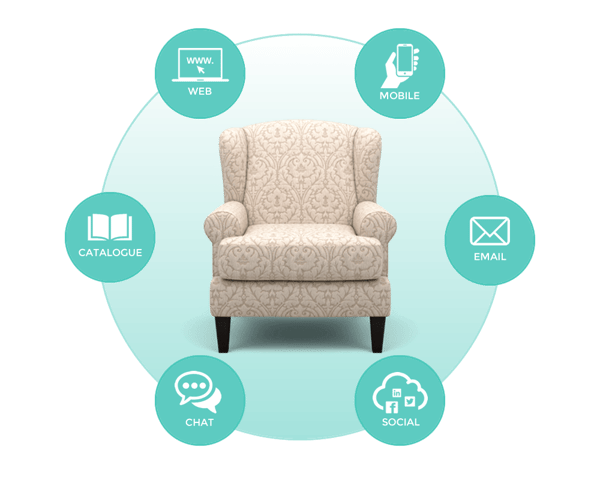
Lesson 3: Retail is not dead. However, the store of the future will be a blend of the digital and physical world, combining the convenient benefits of e-commerce with the haptic product exploring benefits of brick-and-mortar.
The key to successful furniture business in the future will be providing a frictionless and engaging experience across channels and devices.
Although I think there will always be a place for brick-and-mortar locations, more people are becoming comfortable with shopping for home furnishings online. This means that offering a frictionless e-commerce experience to customers will be a necessity moving forward - Anne Flynn Wear, Associate Editor at FurnitureToday
4. Bridge the online-offline gap with 3D technology
The once-in-a-generation shift that happened in the past few months has forced people to shop online. Even for those who had resisted online shopping, it has now become a necessity. Online shopping for non-grocery items tripled — from 12% of consumers who once shopped in physical stores to 36% by mid-April.
Luckily, advancements in technology made everything a lot easier during these difficult times. Thanks to 3D product visualization technologies like 360-degree views and augmented reality, customers can get a real sense of what the product looks like.
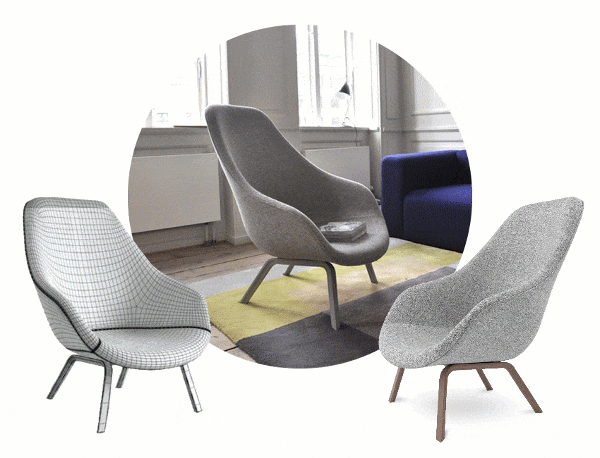
Lesson 4: Companies should start thinking about technologies that can help them future-proof their business by going digital, simultaneously making them more resilient in similar crisis scenarios in the future.
I think having a robust e-commerce presence will be imperative. Companies should also learn more about converting their catalog from 2D to 3D imagery and consider adding tools for augmented and virtual reality. Since these technologies are constantly evolving, it’s important to develop visual content that will be able to be converted to the newest format without much effort or expense - Anne Flynn Wear, Associate Editor at FurnitureToday
Customers can see how a new sofa would look in their apartment, in real-time and without any risk that they are paying for something that doesn’t fit. The possibility to “try before you buy” is very important, especially for big-ticket items. This way, customers can virtually “try-out” furniture, not worrying about bad decisions, which removes a huge weight from their shoulders before the big purchase.
5. Deliver personalized shopping experiences
In e-commerce, one size fits none. Customers expect personalized experiences that make them feel special. Businesses today have to interact with their consumers to get to know them better and to form meaningful, ongoing relationships. In the era of Me-commerce, consumers have increasingly demanding shopping expectations and habits.
Research from Epsilon shows that 80% of consumers are more likely to make a purchase when brands offer a personalized experience, and 90% indicate that they find personalization appealing.
Lesson 5: The latest advancements in information technology like artificial intelligence, geotargeting, and automation will make it easier for companies to enable hyper-personalization in different segments, from design and product recommendations to social media ads.
Mass-marketing and one-size-fits-all just doesn't stand out anymore. You need to make each customer feel like they're special and unique - Kaleigh Moore, Freelance Writer for SaaS & eCommerce
6. Leverage product reviews and user-generated content
Today’s customers are more empowered than ever to make informed decisions. They want to be heard, and they want to hear other customers’ opinions about products and services.
According to Google, 42% of internet users in the U.S. list “reviews from other customers” as a feature that would most increase their likelihood of buying a product.
Lesson 6: Allowing your customers to add reviews and images will instill confidence. Also, you can leverage user-generated content in your social media and email marketing to spark customers’ interest in your products.
User-generated content/reviews can help companies deliver better customer experiences. This form of social proof is essential for eliminating obstacles to purchase--and it reduces return rates, too. Yotpo is a great tool for this, and you can easily integrate it into your e-commerce product pages - Kaleigh Moore, Freelance Writer for SaaS & eCommerce
Product reviews on Interior Define's product detail page
7. Improve last mile delivery and product return processes
Modern customers have sky-high expectations. In the Amazon era, where everyone is used to instant gratification, improving your last mile delivery is vital for e-commerce success.
In addition to this, with increased e-commerce sales, the question of product returns becomes even more important. It’s no secret that e-commerce return rate is three to four times higher than that for brick and mortar purchases. However, with the right processes in place and using photoreal technologies that help customers visualize products online, you can significantly decrease returns.
Lesson 7: E-commerce requires bigger flexibility in the product return policy and improved last mile delivery.
When it comes to online furniture shopping, prolonging the return window will decrease customer anxiety, thus encouraging them to make an online purchase.
8. Put customer experience at the core of your business
During difficult times we realize how fragile people are. Even though we talk about visualization technology, automation processes, and personalization engines, the core of every successful furniture e-commerce business is genuine care about customers.
Customer centricity requires walking in your customers’ shoes before making any decision. So if you struggle to prioritize your next move, think about the things that will help your customers get the most engaging and delightful shopping experience.
Lesson 8: Companies that recognize the importance of customer experience and are willing to go the extra mile to meet and exceed customer expectations are the ones that will earn loyalty, turning customers into brand ambassadors.
We are happy to be seeing furniture retailers that have developed experiences that are meaningful and relevant to consumers. These businesses are also taking the lead in handling the coronavirus crisis in respectful and helpful ways.
9. Rely on analytics to make data-driven decision
Unlike a decade ago, when companies had to make decisions based on “gut feeling,” today in a world full of data and advanced analytics, making informed decisions is a matter of choice, not ability.
According to Deloitte, 49% of businesses say that analytics helps them make better decisions, 16% say that it better enables key strategic initiatives, and 10% say it helps them improve relationships with both customers and business partners.
Lesson 9: Instead of moving blindfolded, make sure to gather data that will simplify your decision-making process. The key is to understand the data and know when to act.
Even basic analytics tools like Google Analytics can give you invaluable insights into the data that you gather throughout the customer buyer journey. Using data, you will be able to optimize customer experiences and increase customer lifetime value (CLTV).
What’s Next?
Furniture players are being forced to evolve more quickly due to multiple challenges, especially after the dramatic effects that COVID-19 has had on consumer behavior. Businesses that are ready to adapt immediately are the ones that will shift over smoothly and embrace the new reality once the storm passes.
Ready to explore the benefits of 3D product visualization technology and how it can make your business more resilient in the future?


